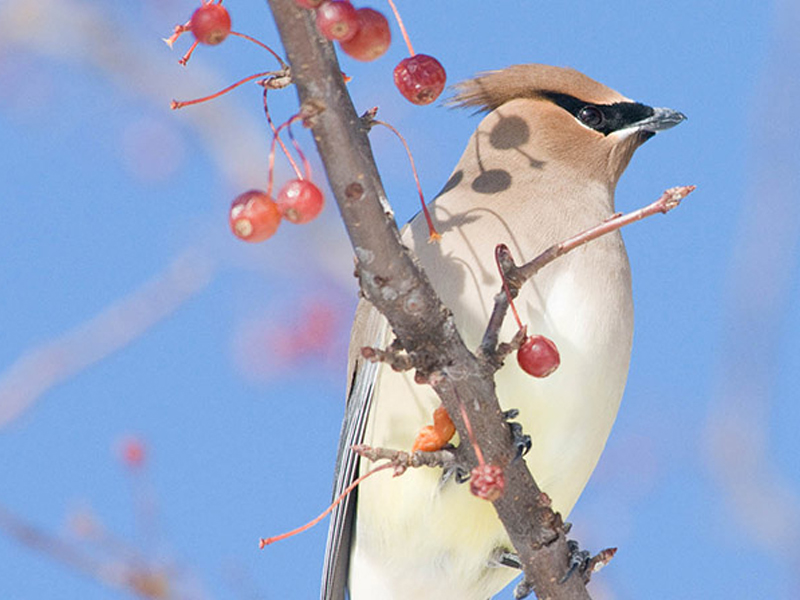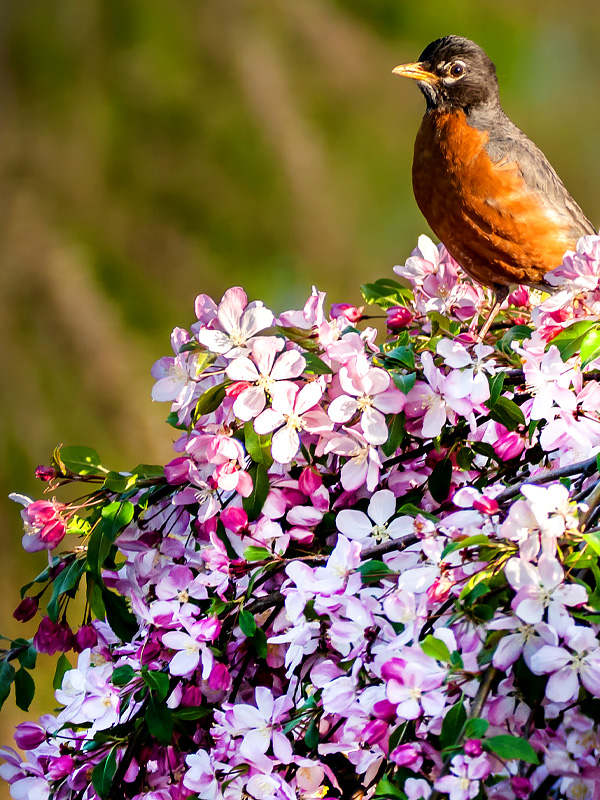

A Crabapple Walk
It's Crabapple Blossom Time!
Great Basin.
Where to begin?
A beautiful spring walk designed to capture the crabapples, and other magical vistas and views, begins at the overlook, next to the English Walled Garden. From this point, the entire central lake is visible, with Evening Island, the Arch and the Serpentine—the two bridges that connect the main island to Evening Island, forming a necklace sparkling with crabapple blossoms along the Lakeside Gardens.
Crabapple Companions
Walking from the overlook toward the Arch Bridge leads visitors directly through masses of complementary flowering perennials, bulbs, ornamental grasses, and ground covers, laid out in a tapestry of color and texture with the intention of blooming in sequence with the crabapples above them. Early spring, the colors of these companion plants focus on yellow, purple, blue, and chartreuse—excellent enhancements for the powerful pinks, reds, and whites of the five different varieties of flowering crabapples: ‘Calocarpa’, ‘Prairifire’, ‘Donald Wyman’, ‘Profusion’, and the Japanese flowering crabapple. These varieties have been chosen for their sequential bloom time; the long-lasting flower shows; the ornamental quality of the buds, flowers, fruit, and foliage; and their resistance to pests and diseases.

Colorful Flowers, Colorful Fruit
Birds, bees, and butterflies love these blossoms, and the tasty fruit that follows is enjoyed by hungry birds and wildlife. There are considerable differences in fruit as well as flowers. ‘Calocarpa’ produces glossy red fruit, while the Japanese flowering crab features yellow fruit with a rosy blush. ‘Prairifire’ retains its small dark fruit through winter, and only in late February or March do ravenous birds and squirrels pick off the dried globes.
The Views from Evening Island
As the walk continues across Evening Island, a new complement of plants borders the crabapples. These will bloom later in the season, after the trees have fully leafed out and are full of fruit. Low-growing dark pink roses, bluebeards, seas of ornamental grasses, and Golden Shower coreopsis will create a painter’s masterpiece of color and texture, whether viewed up close or from across the lake. From all points, the reflected images of flowering trees are intensified in the water. When the petals drop and the wind picks up, it truly seems to rain with flowers.
A Shady Reflection

Crossing the Serpentine Bridge affords another perfect time to look back at the ring of nonstop blooming beauty. As the bridge reconnects with the main island, a shadier environment is revealed, with ligularia, hosta, fern, Jacob’s ladder, and Solomon’s seal growing low, while the crabapples claim the sunnier high spots. The walk around the Great Basin has as many special moments of discovery as there are plants and flowers.
Check out a list of the crabapple species growing at the Garden.

Information from the Experts
Trees and Shrubs for Spring Color
How to Espalier Crabapple Trees
Apple Scab, Crabapple Tree Disease
Diagnosing Disease in Crabapple Trees


